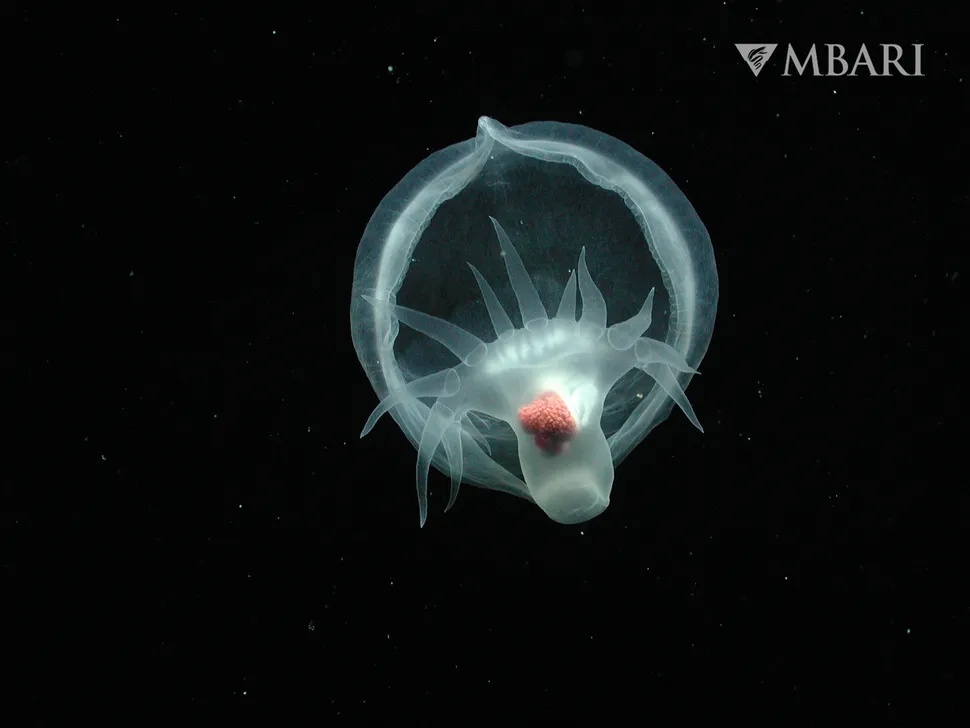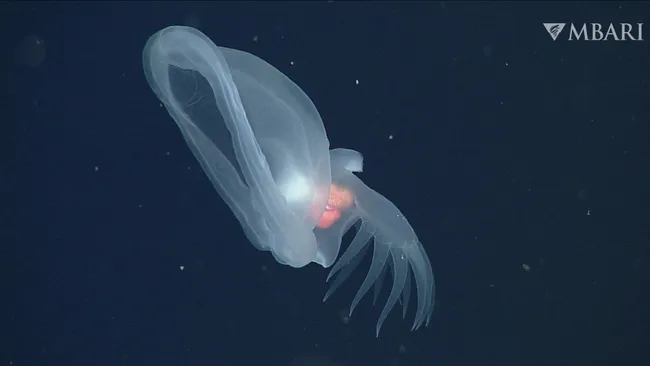Deep-sea researchers have discovered a strange glowing sea slug off the coast of California that lives in the water column — unlike most other species of its kind.
A newly discovered species of deep-sea sea slug, Bathydevius caudactylus, has stunned scientists with its unique features and bioluminescent defense mechanisms. Found at depths between 3,300 and 13,100 feet (1,000 to 4,000 meters) in the northeastern Pacific Ocean, this extraordinary nudibranch is the first of its kind to live in the deep water column. Researchers first encountered it in February 2000 off the coast of Monterey Bay, California, and after 20 years of study, they published the most comprehensive description of this elusive mollusc.

Bathydevius caudactylus stands out due to its translucent body, a large gelatinous hood, a fringed tail, and colorful internal organs visible through its skin. Its hood, which functions like a Venus flytrap, is used to capture crustaceans and other fast-moving prey, a technique previously seen in other marine animals like jellyfish. Despite being slow-moving, the sea slug manages to catch its food in this unique and effective manner.
What makes this discovery even more remarkable is that, unlike most nudibranchs that live on the seafloor in shallow waters, this species thrives in the deep ocean, far from the surface. It is also the first nudibranch to be observed living in the deep-water column and feeding on free-swimming prey. This adaptation is a prime example of evolutionary innovation, with the researchers coining a new family for the species, Bathydevius, because of its distinct characteristics.
In addition to its curious feeding habits, the mystery mollusk also uses bioluminescence for defense. When threatened, it can emit light to confuse predators or detach a glowing limb as a decoy, similar to how some lizards drop their tails when attacked.
This species, though primarily observed in the northeastern Pacific, may have a broader distribution, as researchers have noted similar creatures in the Mariana Trench, the deepest part of the ocean. While much has been learned about Bathydevius, scientists are still puzzled by how it captures its fast-moving prey, given its relatively slow movements.
